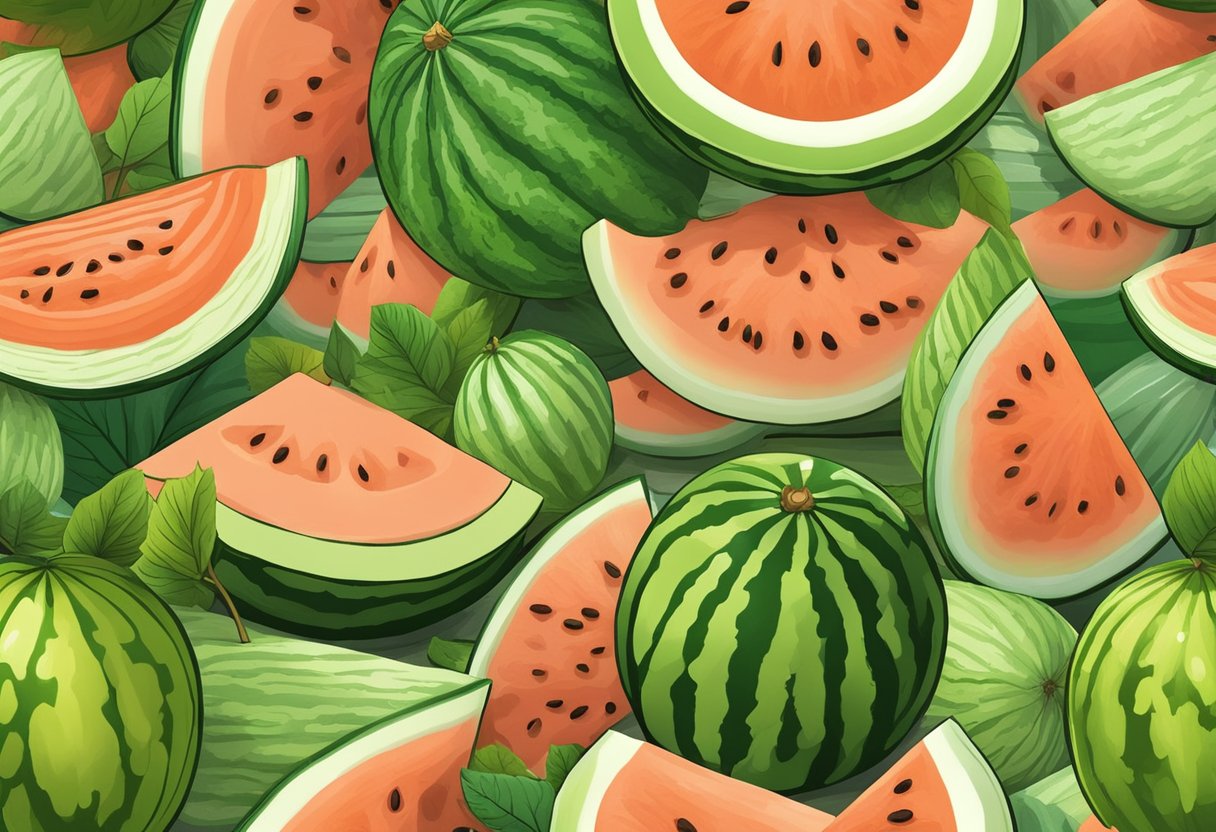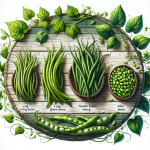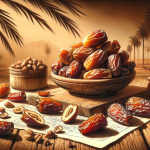Types Of Melons
Melons are a type of fruit that is sweet, refreshing, and perfect for summer. There are many different types of melons, each with their own unique characteristics and flavor profiles. From watermelons to honeydews, cantaloupes to muskmelons, and more, there is no shortage of options when it comes to this delicious fruit.
Common varieties of melons are typically categorized by their appearance and flavor. For example, watermelons are large and oblong with a green rind and sweet, juicy red flesh. Cantaloupes have a tan, netted skin and orange, sweet flesh. Honeydew melons are round with a smooth, pale green skin and sweet, juicy flesh. Other varieties of melons include casaba, Crenshaw, Galia, and Persian, each with their own unique flavor and appearance.
Melons are not only delicious, but they also offer a range of nutritional benefits. They are low in calories, high in fiber, and packed with vitamins and minerals. Additionally, they are a great source of hydration, making them the perfect snack for hot summer days. Whether you enjoy them sliced, diced, or blended into a smoothie, melons are a versatile and nutritious addition to any diet.
Key Takeaways
- Melons are a sweet and refreshing type of fruit that come in many different varieties.
- Common types of melons include watermelon, cantaloupe, and honeydew, each with their own unique characteristics and flavor profiles.
- Melons are low in calories, high in fiber, and packed with vitamins and minerals, making them a healthy and delicious snack option.
Common Varieties of Melons

Melons are a juicy and refreshing fruit that comes in different varieties. Some of the most common varieties of melons are watermelon, cantaloupe, and honeydew melon.
Watermelon
Watermelon is a large, juicy fruit with a sweet taste. It is a popular fruit during the summer season, and it is often used in salads, smoothies, and other recipes. Watermelons are rich in vitamins A and C, and they are also a good source of potassium.
When choosing a watermelon, look for one that is heavy for its size and has a uniform shape. The rind should be smooth and free from bruises or cuts. The flesh should be bright red and juicy, with black seeds or seedless.
Cantaloupe
Cantaloupe is a sweet and juicy fruit with a distinctive aroma. It is often used in fruit salads, smoothies, and other recipes. Cantaloupes are rich in vitamins A and C, and they are also a good source of potassium.
When choosing a cantaloupe, look for one that is heavy for its size and has a slightly soft end opposite the stem. The rind should be rough and netted, and it should have a sweet aroma. The flesh should be orange and juicy, with a small seed cavity.
Honeydew Melon
Honeydew melon is a sweet and juicy fruit with a smooth texture. It is often used in fruit salads, smoothies, and other recipes. Honeydew melons are rich in vitamins A and C, and they are also a good source of potassium.
When choosing a honeydew melon, look for one that is heavy for its size and has a smooth, waxy rind. The flesh should be pale green and juicy, with a small seed cavity.
In conclusion, watermelon, cantaloupe, and honeydew melon are some of the most common varieties of melons. They are all rich in vitamins and minerals, and they are a delicious and healthy addition to any diet.
Melon Characteristics
Physical Attributes
Melons come in a variety of shapes, sizes, and colors. Some are round, while others are oblong or oval. The skin of melons can be smooth or rough, and it can be a range of colors, including orange, yellow, red, pink, or green. The juicy flesh of melons can also come in different colors, such as white, orange, or pink. Some melons can grow to be quite large, weighing more than 200 pounds (90 kg), while others are small enough to fit in the palm of your hand.
When selecting a ripe melon, it is essential to look for certain physical attributes. For example, a ripe melon should be firm but not too hard. The skin should be smooth and free from any cracks or soft spots. A ripe melon should also have a pleasant aroma, which can be either floral or fruity, depending on the variety.
Taste Profile
Melons have a sweet and refreshing taste that varies depending on the variety. Some melons have a mild, sweet flavor, while others can be quite spicy. Watermelons, for example, have a high water content and a sweet, dilute flavor. Cantaloupes, on the other hand, have a more intense flavor and a sweet, musky aroma.
The taste of melons can also be influenced by the climate in which they are grown. For example, Ananas melons tend to be sweeter in warmer climates and can yield slightly spicy flavors in colder ones. Additionally, the color of the flesh can also affect the taste. For example, orange-fleshed melons tend to be sweeter than white-fleshed ones.
In summary, melons are a diverse group of fruits with a range of physical attributes and taste profiles. When selecting a ripe melon, look for firmness, smooth skin, and a pleasant aroma. The taste of melons can vary from mild to spicy, depending on the variety and growing conditions.
Cultivation and Harvest
Growing Regions
Melons are grown in various regions around the world, including North America, Europe, Asia, and Africa. In North America, melons are commonly grown in California, Arizona, and Texas. In Europe, Spain and Italy are major producers of melons. In Asia, China, India, Iran, and Japan are significant producers of melons. In Africa, Egypt is one of the largest producers of melons.
Harvesting Techniques
Melons are typically harvested in the summer and autumn months when they are at their peak ripeness. The harvesting process involves picking the fruit from the vine and removing any excess foliage. It is important to handle the fruit with care to avoid damaging the delicate skin.
One harvesting technique that is commonly used is called “full slip.” This is when the fruit separates easily from the vine when it is fully ripe. Another technique is to look for a crack around the stem of the fruit, which indicates that it is ready to be harvested.
After harvesting, melons should be stored in a cool, dry place. It is important to avoid storing them in direct sunlight or near other fruits that emit ethylene gas, as this can cause the melons to ripen too quickly and spoil.
Overall, growing and harvesting melons requires careful attention to detail and proper care. With the right techniques and knowledge, anyone can enjoy the sweet, juicy taste of fresh melons.
Nutritional Value and Health Benefits
Melons are not only sweet and refreshing, but they also offer a variety of nutritional benefits. They are low in calories and high in water content, making them a great choice for those looking to maintain a healthy diet. In addition, melons are a good source of vitamins and minerals, such as vitamin C, vitamin A, and potassium, which are essential for maintaining good health.
Watermelon, cantaloupe, and honeydew are three of the most popular types of melons, and each has its own unique set of nutritional benefits. Watermelon, for example, is particularly high in vitamin C and contains lycopene, a powerful antioxidant that can help protect against cancer. Cantaloupe is a good source of vitamin A, which is important for maintaining healthy eyes and skin. Honeydew is rich in iron, which is essential for the production of red blood cells.
Here is a breakdown of the nutritional value of each of these melons:
Watermelon
Watermelon is a juicy and refreshing fruit that is particularly high in water content. It is also a good source of vitamin C, vitamin A, and potassium. Here is a breakdown of the nutritional value of one cup of diced watermelon (152 grams):
- Calories: 46
- Protein: 0.9 grams
- Carbohydrates: 11.6 grams
- Fiber: 0.6 grams
- Sugar: 9.5 grams
- Fat: 0.2 grams
- Vitamin C: 12.5 mg (21% of the Daily Value)
- Vitamin A: 569 IU (11% of the Daily Value)
- Potassium: 170 mg (5% of the Daily Value)
Cantaloupe
Cantaloupe is a sweet and juicy fruit that is an excellent source of vitamin A. It is also a good source of vitamin C and potassium. Here is a breakdown of the nutritional value of one cup of diced cantaloupe (160 grams):
- Calories: 54
- Protein: 1.1 grams
- Carbohydrates: 13.7 grams
- Fiber: 1.4 grams
- Sugar: 12.7 grams
- Fat: 0.3 grams
- Vitamin C: 58.7 mg (98% of the Daily Value)
- Vitamin A: 4665 IU (93% of the Daily Value)
- Potassium: 417 mg (12% of the Daily Value)
Honeydew
Honeydew is a sweet and juicy fruit that is particularly high in iron. It is also a good source of vitamin C and potassium. Here is a breakdown of the nutritional value of one cup of diced honeydew (170 grams):
- Calories: 64
- Protein: 0.8 grams
- Carbohydrates: 16.3 grams
- Fiber: 1.4 grams
- Sugar: 14.4 grams
- Fat: 0.2 grams
- Vitamin C: 30.6 mg (51% of the Daily Value)
- Iron: 1.1 mg (6% of the Daily Value)
- Potassium: 388 mg (11% of the Daily Value)
Overall, melons are a great addition to a healthy diet. They are low in calories, high in water content, and packed with vitamins and minerals that are essential for good health.
Culinary Uses
Melons are versatile fruits that can be used in a variety of culinary applications. They are commonly enjoyed raw as a refreshing snack or added to salads for a sweet and juicy crunch. Melons can also be juiced to create a refreshing and healthy beverage.
In addition to their use in raw preparations, melons can also be used in desserts. They are often used to make sorbets, ice creams, and fruit salads. Melon balls can also be used as a garnish for desserts or cocktails.
Melons are part of the Cucurbitaceae family, which also includes cucumbers and squash. They are rich in vitamins and minerals, making them a healthy addition to any diet. Melons are particularly high in vitamin C, potassium, and beta-carotene.
When selecting a melon for culinary use, it is important to choose a ripe and flavorful fruit. Look for a melon that is heavy for its size and has a sweet aroma. The flesh should be firm but yielding when pressed.
Overall, melons are a delicious and healthy addition to any meal. Whether enjoyed raw, in salads, or in desserts, they add a sweet and refreshing flavor to any dish.






